Article
Groundbreaking Lung Cancer Research Abounds at Huntsman Cancer Institute and Intermountain Healthcare
Author(s):
Faculty from Huntsman Cancer Institute and Intermountain Healthcare delve into the interesting research efforts being made at their respective institutions.
During the 2019 OncLive® State of the Science Summit™ on Non­—Small Cell Lung Cancer, faculty from Huntsman Cancer Institute and Intermountain Healthcare delved into the interesting research efforts being made at their respective institutions.
Wallace L. Akerley, MD, professor of internal medicine and director of the Lung Cancer Disease Center of Excellence at Huntsman Cancer Institute, University of Utah
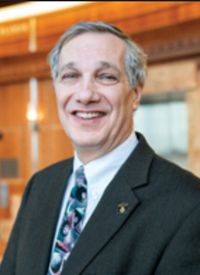
Wallace L. Akerley, MD
Wallace L. Akerley, MD
Chairman, Protocol Review and Monitoring Committee and Director, Lung Cancer Disease Center of Excellence, Huntsman Cancer Institute, and Member, National Comprehensive Cancer Network’s Steering Committee for Small Cell Lung Cancer Panel and NSCLC Panel
“A partner of mine, Lisa A. Cannon-Albright, PhD, of Huntsman Cancer Institute, discussed heredity in lung cancer [at the event]. It’s believed that smoking is responsible for all lung cancer. However, in the state of Utah, we have the lowest smoking rates in the country and we still see plenty of lung cancer. We have been looking at this more closely in terms of heredity, and we have been able to find a heredity element [to the disease], but it’s limited to those with nonsmoking lung cancer. This is kind of a breakthrough.
If we can understand why the EGFR mutation is more common in an Asian population, we’ll be able to look for ways to prevent the mutation from taking place and we’ll be able to consider screening programs. The fact that [lung cancer is] more common in the Asian population makes it very clear that there’s a genetic contribution [to the disease].
We’ve taken [this idea] one step further and looked in our own Utah database, where we know who is related to whom, and we can see clear paths of genetics showing that these people would be at somewhat greater risk for lung cancer. If we can understand who these families are, we’ll be able to look for predisposing genes—just as we do in breast cancer and ovarian cancer. That’s perhaps the most exciting thing in my mind that’s happening here; this is very cool and very different from the way the rest of the world is thinking.”
Sonam Puri, MD, an assistant professor in medical oncology at Huntsman Cancer Institute, University of Utah
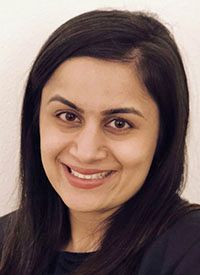
Sonam Puri, MD
Sonam Puri, MBBS
Assistant Professor in Medical Oncology, Huntsman Cancer Institute
“The trial that I’m most excited about is one in which we are looking at two dosing schedules of chemotherapy and immunotherapy. We are going to randomize treatment-naïve patients to one of two arms. In the first arm, they’re going to start immunotherapy 1 week before chemotherapy, and in the second arm, they’re going to start chemotherapy 1 week before immunotherapy.
We are not only looking at the efficacy, which is a primary endpoint, but we also have a robust correlative biomarker section, which is going to help us identify the individual role of these concurrent strategies and if any benefit of sequencing exists here. That is a really clever trial design and I’m excited to work on that.”
Clarke A. Low, MD, director of thoracic oncology at Intermountain Healthcare
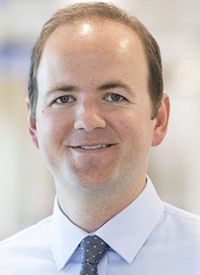
Clarke A. Low, MD
Clarke A. Low, MD
Director, Thoracic Oncology, Intermountain Healthcare
“I will just mention that investigators at our sister institution, Huntsman Cancer Institute, are doing a trial looking at the combination of ipilimumab (Yervoy) and osimertinib (Tagrisso). Some earlier-phase studies looked at other checkpoint inhibitors with osimertinib and they were actually stopped due to safety concerns, so there certainly is risk.
However, one of the biggest challenges we face in the treatment of patients with EGFR-mutated disease is that we’re still not curing patients. Yes, they’re living much, much longer than they ever were before with survival now approaching 3 or 4 years. Yes, they’re living better, because therapies are much more tolerable, but these patients are still going to have progressive disease.
This trial is interesting in that some data from an earlier trial have demonstrated that those patients who got this combination of ipilimumab—and in that trial, it was with a first-generation TKI—are still progression-free at 3 or 4 years down the road. There are still many opportunities to try and improve the care of these patients, and I’m hopeful that this trial will provide insight into how best to do that.”
Lisa A. Cannon-Albright, PhD, adjunct professor, Family and Preventative Medicine, professor, Internal Medicine, University of Utah School of Medicine, and chief, Genetic Epidemiology, University of Utah
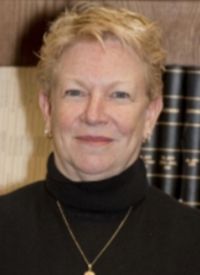
Lisa A. Cannon-Albright, PhD
Lisa A. Cannon-Albright, PhD
Professor, Internal Medicine, and Division Chief, Division of Genetic Epidemiology, Department of Medicine, University of Utah School of Medicine; and Investigator, Huntsman Cancer Institute
“I study several different cancers. Within my group, we have identified several cancer predisposition genes. Our group is actually the one that found the first two breast cancer genes and the first melanoma gene, so we kind of have a road marked out. We will definitely be identifying and sampling high-risk pedigrees—not just pedigrees with lots of lung cancer, but pedigrees with a statistical excess, meaning more lung cancers than there should be in the family. We will focus on the nonsmoking, nonsquamous NSCLCs.
A second thing I really like to do is study families and find genes, but using [the Utah genealogy database], it’s possible to predict risk for lung cancer based purely on family history. We don’t just look at close relatives; we look at close and distant relatives. Our family history risk-prediction models go all the way out to cousins and grandparents; they’re different than other [models]. That’s another thing that we are working toward. That model of risk prediction will be an excellent tool for those doing prevention studies or vaccination trials, where they can actually ask people’s family history and stratify their study group by high and low risk. Of course, if you study more high-risk individuals, you might get to a significant finding a little more quickly in your research.”
Trudy G. Oliver, PhD, associate professor, University of Utah and Huntsman Cancer Institute
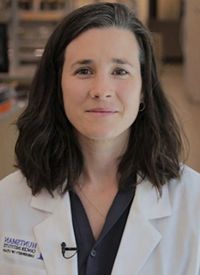
Trudy G. Oliver, PhD
Trudy G. Oliver, PhD
Associate Professor, University of Utah and Huntsman Cancer Institute
“I would love to highlight this new appreciation for the molecular subsets of small cell lung cancer (SCLC), because historically it has been treated as a single disease. Those patients still don’t get genetic testing or any kind of biomarker-based stratification in the clinic, and our work and others’ is suggesting that molecular information is meaningful and can make a difference for patients.
This started with our paper published in Cancer Cell in 2017 for our lab, which built on many others’ work to come to this conclusion. Just in the last 2 years, there has been an explosion among many groups that are appreciating these distinct molecular subsets. Many of us in the field published a review in Nature Reviews Cancer that came out in 2019, which was unveiling our current understanding of these molecular subtypes. I believe that has been a major finding in the SCLC field and it’s causing us to reassess the previous 40 years of research in light of these molecular subsets.”








